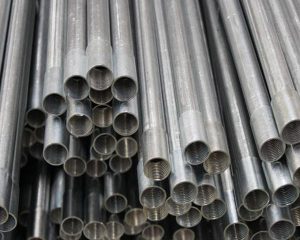How to apply conduit pipe rightly in projects?
In most cases, conduit pipe provides very good protection to enclosed conductors from impact, moisture, and chemical vapors. For certain conditions, wiring systems in buildings may be subject to frequent alterations, and frequent wiring changes are made simpler and safer through the use of steel conduit, as existing conductors can be withdrawn and new conductors installed, with little disruption along the path of the conduit. Conduit systems are generally classified by the wall thickness, mechanical stiffness, and material used to make the tubing. Materials may be chosen for mechanical protection, corrosion resistance, and overall cost of the installation (labor plus material cost). Wiring regulations for electrical equipment in hazardous areas may require particular types of conduit to be used to provide an approved installation.

Gi square steel pipe has been considered popular a lot among many users today. With the layer of protection, this steel pipe can be used in outdoor areas, and can withstand the harm from some of the environmental effects. Specifically, the galvanization process protects the steel from rusting damage that can occur during transportation, installation and service. The zinc layer on the surface of pipe can form a barrier protection for steel products to extend the service life in applications. When installing galvanized steel pipe in the actual application, steel pipe users should pay more attention to the requirements of specific distance between the pipes. Generally speaking, users should consider the pipe parallel laying between the water supply system and the drainage system indoors. And the specific distance between the pipelines should be based on the actual situation in different environments, which in particular should be taken into account during the actual installation. In addition, conductors installed within conduit cannot dissipate heat as readily as those installed in open wiring, so the current capacity of each conductor must be reduced (derated) if many are installed in one conduit. It is impractical, and prohibited by wiring regulations, to have more than 360 degrees of total bends in a run of conduit, so special outlet fittings must be provided to allow conductors to be installed without damage in such runs.
Generally speaking, the cost of steel conduit installation is higher than other wiring methods due to the higher steel pipe prices and the labor costs. In applications such as residential construction, the high degree of physical damage protection may not be required, so the expense of steel conduit is not warranted.
Tel: +86 18202256900 Email: steel@tjdpbd.com









